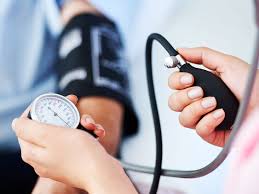Written by; Sebastian Mann (Bach. Ex. Sci)
Hypertension is caused when there is an increase in pressure within our blood vessels which is often caused by factors such as decreased cardiovascular conditioning and diet.
Hypertension is known more commonly as high blood pressure
High blood pressure (hypertension) affects 1 in every 3 Australians across all ages. Hypertension remains the largest risk factor for cardiovascular disease and can lead to strokes and heart attacks when left uncontrolled.
Cardiovascular training is been proven to be one of the most beneficial strategies for improving cases of hypertension.
Benefits of cardiovascular training include an increase in vascular function, strengthening of the heart muscle and a reduced effect of aging on arteriole stiffness.
Regular aerobic exercise has been found to reduce blood pressure levels by up to 5-7 mmHg.

Exercise for Hypertension
Cardiovascular training can be prescribed to individuals with hypertension using the FITT principle which consists of 4 factors being: frequency, intensity, time and type.
Frequency: Frequency of cardiovascular training should consist of 5-7 days a week of aerobic exercise for optimal results in individuals with hypertension.
Intensity: It is recommended that individuals diagnosed with hypertension are undertaking moderate intensity exercise at a level of 40-60% of their VO2max or at a level of 11-14 on an RPE scale from 6 being no exertion to 20 being maximal exertion.
Time: Aerobic exercise has been found to be most useful when done in bouts of 30- 60minutes continuously or accumulated throughout a session, however, smaller bouts of 3-10 minutes accumulated over the day adding up to this has also been shown to elicit blood pressure changes.
Type: Exercise types for reducing blood pressure should include activities that are continuous and require large movements and muscles groups to properly challenge the cardiovascular across the entire body and not in one segment.
Some examples of these types of activities include walking, swimming, running and cycling and rowing.
Dietary Considerations for Reducing Hypertension
Diet is another very important factor in hypertension. Diets that are high in fat, lacking in fibre or are high in salt increase inflammatory responses within the body and in turn increasing blood pressure.
Reducing salt intake, lowering alcohol consumption, increasing water intake to maintain appropriate blood viscosity (thickness) and consuming food high in nitrates such as nuts and vegetables are all beneficial ways for reducing hypertension.
These are many guidelines for helping reduce hypertension. It is important to understand that everybody is different and there is no “one method fits all” approach on reducing blood pressure.
It is important to receive help from a health professional so they can advise a plan and identify the best strategy that will work for you going forward.
How can an Exercise Physiologist at Inspire Fitness help?
At Inspire Fitness our exercise physiologists can help by providing an initial assessment to design a program that is tailored to your individual needs.
Our Exercise Physiology team at Inspire Fitness will provide ongoing support, guidance and education through face to face sessions and ways in which you can alter your lifestyle to ensure you are making progress and are working towards your goals.
For more information ask one of our Exercise Physiology team members or contact us on 9857 3007.
